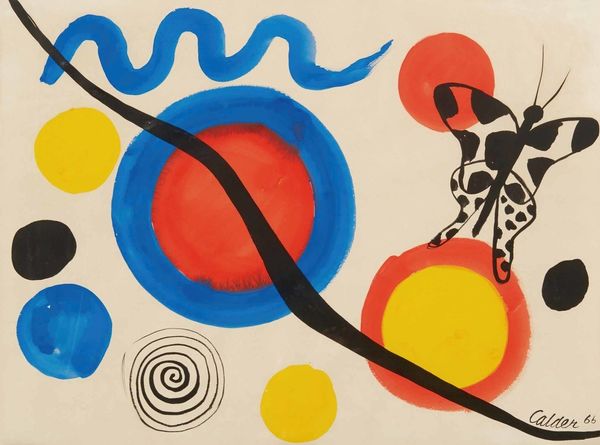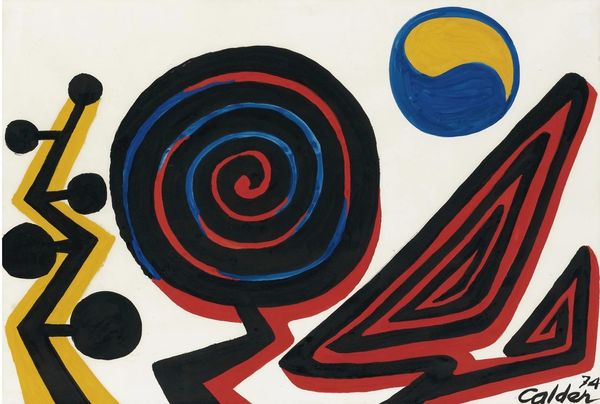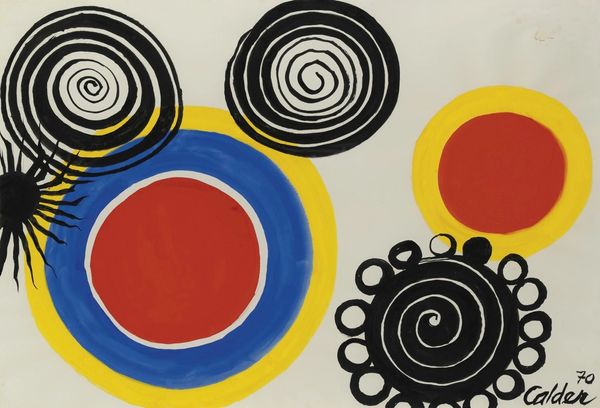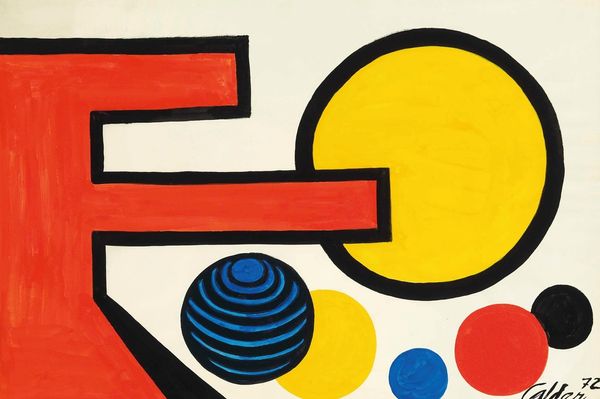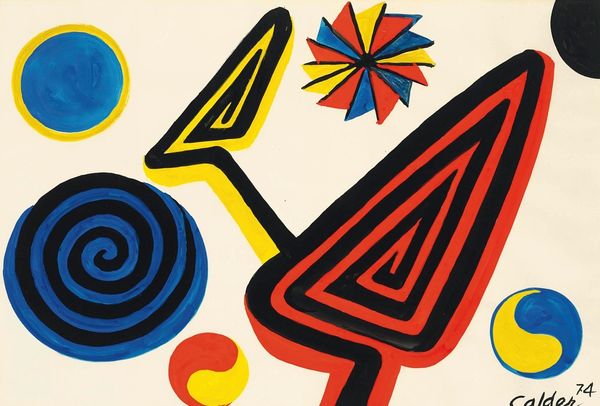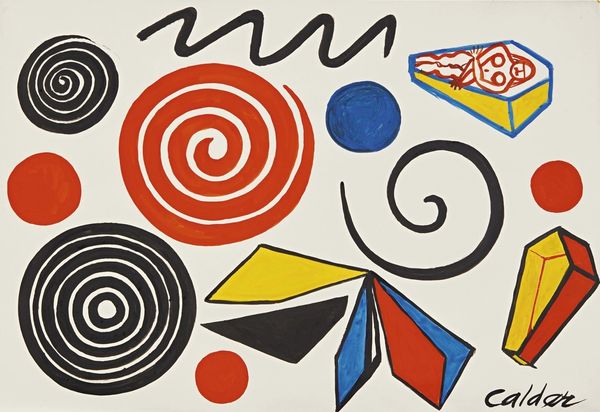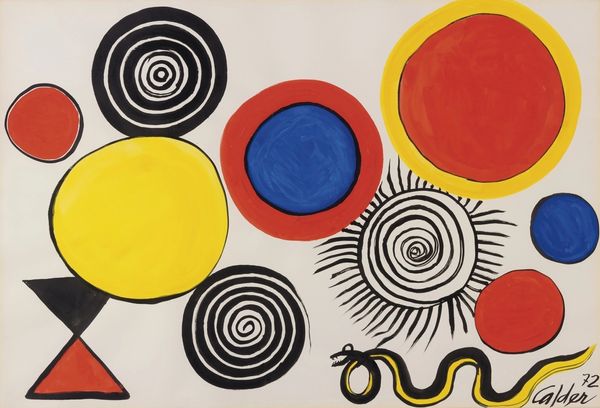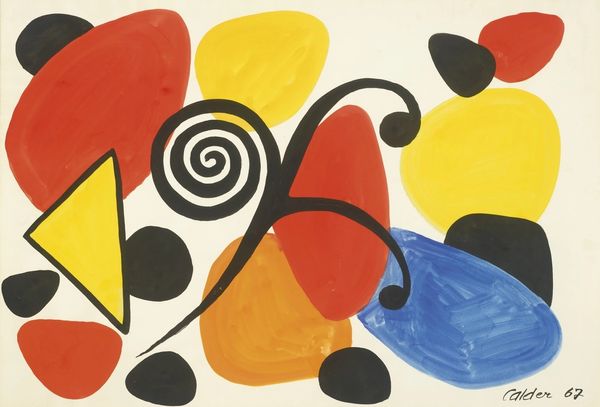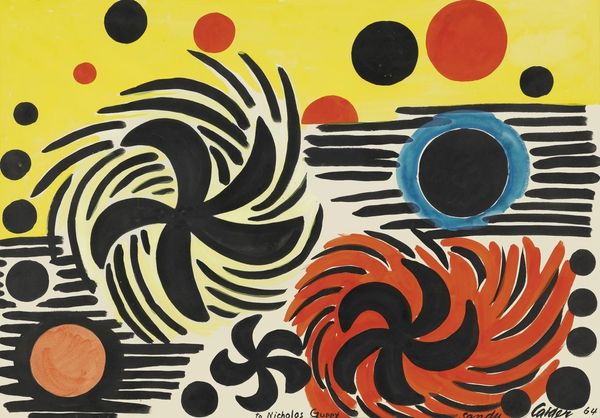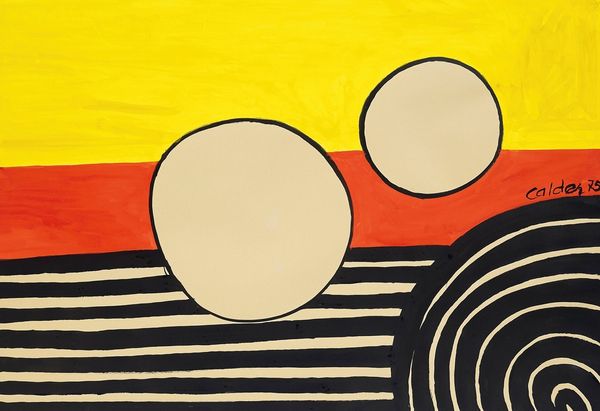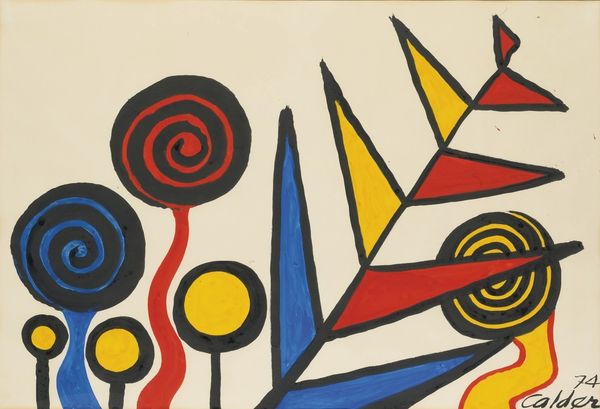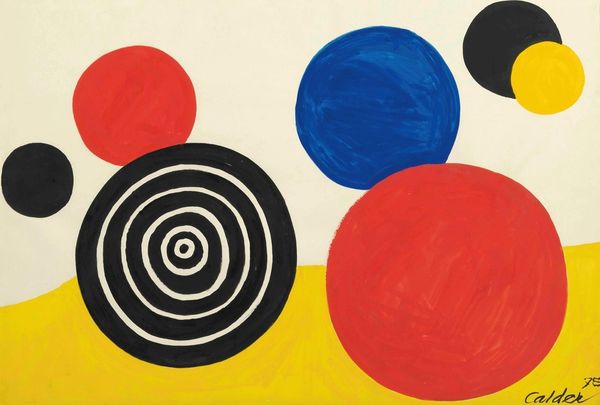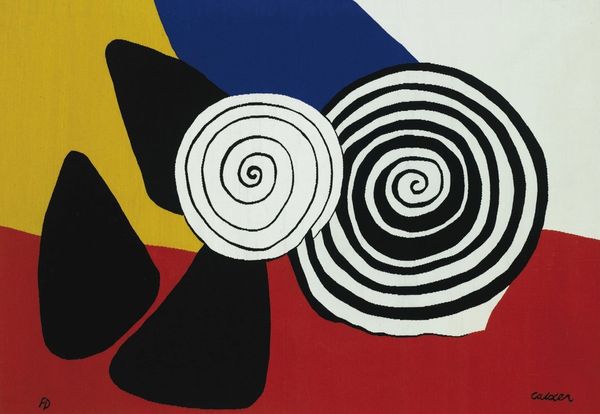
Copyright: Modern Artists: Artvee
Curator: Standing before us is "Feathery Starfish" by Alexander Calder, created in 1973. Editor: My immediate thought is joyful, almost childlike. The bold colours and simple shapes are so striking and playful! There is something very optimistic here, I think. Curator: Indeed. Calder was instrumental in liberating sculpture from its traditional static form. But this 1973 piece departs slightly from his better known mobiles, instead opting for the immediacy of gouache on paper, moving instead to the language of painting. It is suggestive of a certain trend within Pop Art at the time. Editor: The flatness and the outlined shapes create a strong visual impact. Take the "starfish," for example—it's not representational at all. It’s essentially a swirling pattern, lines radiating from a center to create a sense of movement. It does remind one of Op Art. Curator: True, this playfulness and embrace of non-objective forms positioned Calder centrally within a broader cultural shift questioning traditional modes of representation and artistic production. Consider Calder's relationship with institutions like the Museum of Modern Art – he navigated established systems while retaining critical independence. Editor: Yes, and the colours aren't simply decorative; they contribute to the composition. Red, blue, and yellow– the primaries. Notice also the weight given to the lines. There is a careful balance achieved between the black lines with the planes of block colour. The simplicity is quite deceptive! Curator: Absolutely. This work epitomises a crucial moment where art was being democratized, moving from elitist circles to engaging broader audiences through accessible forms. It serves as a point of cultural dialogue. Editor: Well, it’s definitely ignited one between us. For me, it highlights how impactful simplicity and confident use of colour can be. It demonstrates what can be accomplished with shape and line. Curator: And for me, the work's social context and accessibility demonstrates how we redefine established cultural structures through art. It reminds us of our individual perceptions of art as it interacts with broader social considerations.
Comments
No comments
Be the first to comment and join the conversation on the ultimate creative platform.
